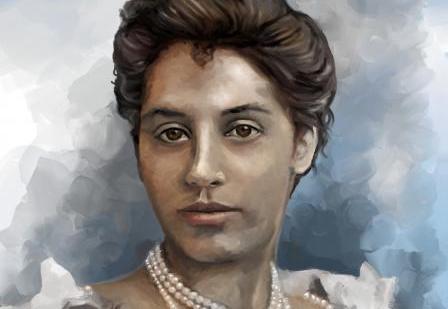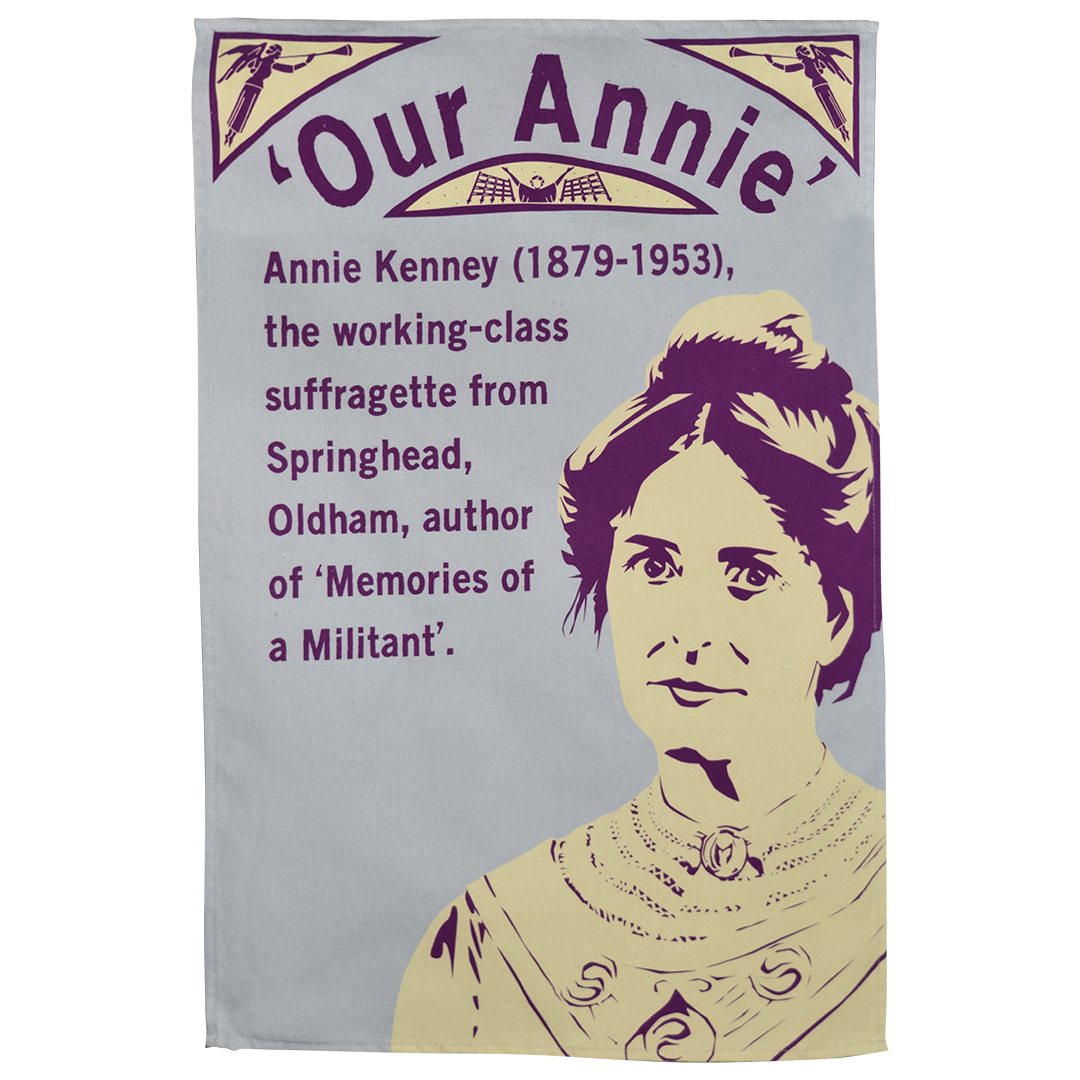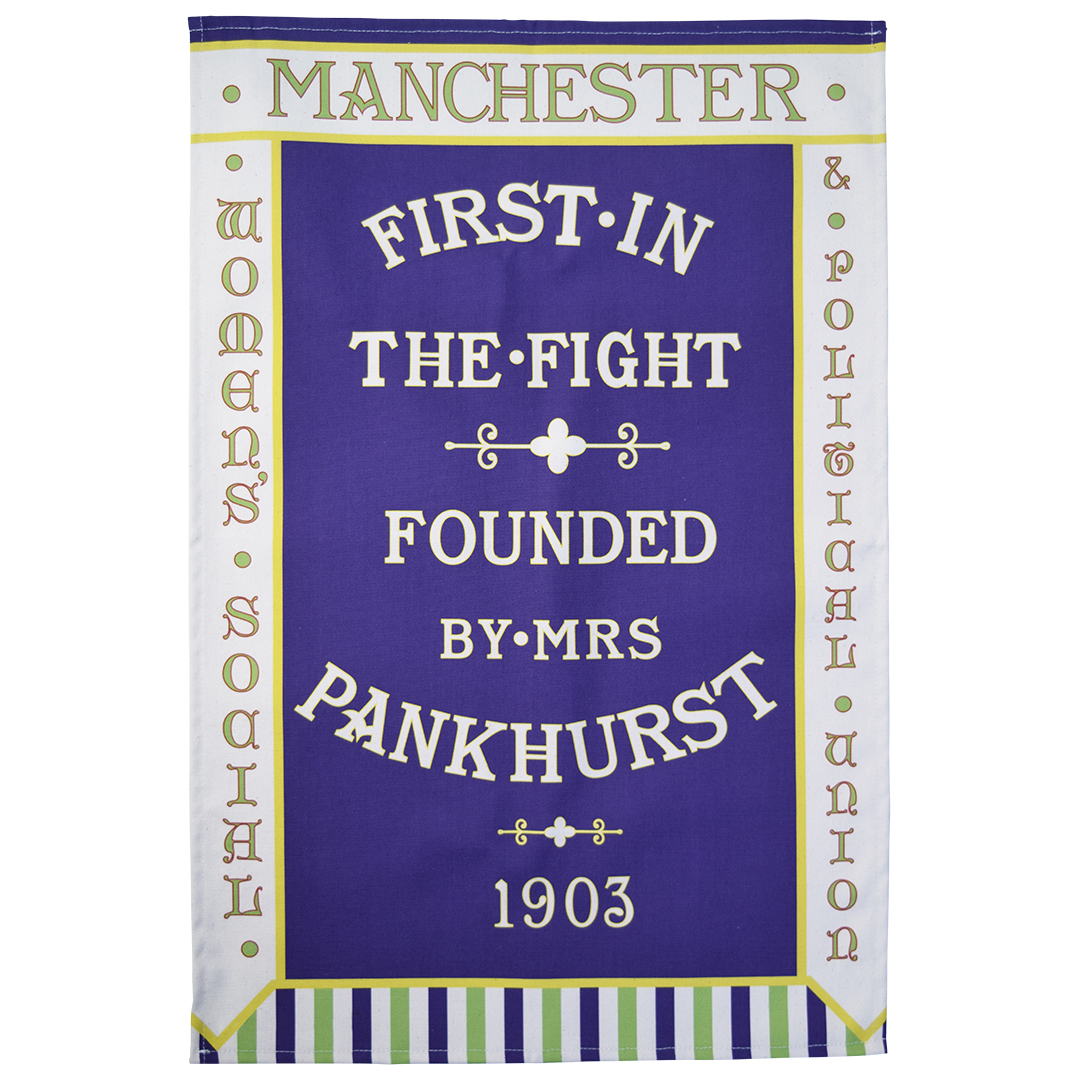The Lioness of Belgravia: Sophia Duleep Singh
Posted by Pete on 8th Aug 2022

The story of Sophia Duleep Singh, Indian Princess and militant suffragette...
The fight for women’s suffrage in early 20th century Britain included people from all walks of life, from Irish Republicans like Constance Markievicz to working-class socialists like Annie Kenney.
Though the story we’re often told about the women's suffrage movement is overwhelmingly white and middle-class, the reality is – as usual with history – much more diverse.
We hear a lot about Emmeline Pankhurst and Emily Wilding Davison, and it’s important that these great women of history are remembered and celebrated.
But one of the many remarkable figures often left out of the women's suffrage story is Sophia Duleep Singh: Indian Princess, suffragette, and god-daughter to Queen Victoria…
Known as 'Our Annie', Annie Kenney became a leading figure in Emmeline Pankhurst's Women's Social and Political Union (WSPU)
Click to view our Annie Kenney tea towel
Princess Sophia Alexandrovna Duleep Singh was born today in 1876, in Belgravia.
Her dad was Duleep Singh, the last Maharaja of the Sikh Empire.
Now, in case you’re wondering what brought this Indian Princess to London, here’s some useful context.
During the reign of Sophia’s grandfather Ranjit Singh, the Sikh Empire had established a powerful state in the northwest of India.
Ranjit was a legendary figure, known by his people as ‘The Lion of Punjab’.
But it didn’t last. Once Ranjit had died, another war broke out between the Sikh Empire and the British East India Company. And the British won.
The Sikh royals were deposed by the British and exiled to England in 1854.
Impressed by the dynastic glamour of a Maharaja, Queen Victoria took the family under her personal protection.
That’s why, when Sophia was born some 22 years later, she ended up god-daughter to the Queen-Empress.
But how did she end up a militant suffragette? In short: unpredictably.

Sophia Duleep Singh selling copies of The Suffragette newspaper outside Hampton Court
Sophia had a somewhat conventional upbringing for an aristocrat favoured by the Queen: dog-breeding, photography, socialising, etc.
But then, in 1907, she made a visit to her father’s homeland in the Punjab.
In India, Sophia and her sisters were treated like legends by the people. These were the granddaughters of Ranjit Singh, the Lion who had stood up to the British Empire.
This experience awoke Sophia’s political consciousness.
While in India, she met with Indian anticolonial leaders like Gopal Krishna Gokhale and Lala Lajpat Rai. Sophia embraced their cause. The god-daughter of the Empress was turning against the Empire.
Back home in England, though, Sophia turned her new-found radicalism toward a different goal: women’s suffrage.
In 1909, she joined the Pankhursts' Women's Social and Political Union (WSPU). It was the main force on the militant wing of the feminist movement, defined by the principle: Deeds not Words.
Sophia’s deeds began straightaway.
This tea towel is based on a banner used by the Manchester branch of the WSPU, providing the backdrop for some of Pankhurst's most famous speeches
Click to view our Manchester WSPU tea towel
She quickly became a key fundraiser for the movement, even giving a horse-drawn carriage to the Kingston and District Branch of the WSPU for campaigning.
On any given day, she could be found outside Hampton Court Palace, giving out copies of The Suffragette newspaper.
And on 18 November 1910, she was on the frontline of the infamous Black Friday police riot at Westminster.
After Herbert Asquith’s Liberal government broke its promise to pass a key Bill which would have opened the way to women’s suffrage, the WSPU and other groups marched on Parliament.
There they were assaulted en masse by hundreds of armed police. Two hundred women were attacked, and two would later die from their injuries.
Sophia threw herself between one officer and a suffragette he was beating. When he recognised Sophia as the god-daughter of Queen Victoria, he ran as fast as he could.
On a number of occasions throughout her life, Sophia was brought to trial for refusing to pay taxes on the famous grounds of ‘no taxation without representation’.
Owing to her royal celebrity, however, she was never arrested. King George V, grandson of Victoria, wailed to his officers “Have we no hold on her?!”
After the First World War, during which Sophia served as a nurse in the Red Cross, British women who were over 30 (and who met certain property qualifications) were enfranchised by the 1918 Representation of the People Act.
But for Sophia, the fight was far from over, and she continued to fight for women’s suffrage around the world, particularly in India.
For too long, the women's suffrage story has been whitewashed and entirely focused on Britain.
But more often than not, the reality was much more culturally and racially diverse than historians would have us believe.
And the Indian princess who helped lead the suffrage movement to victory is just one remarkable example.


